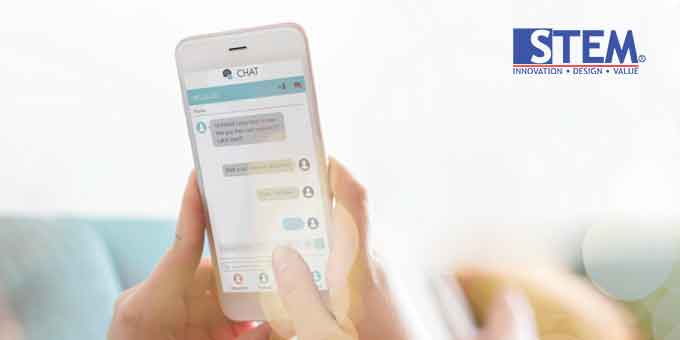ChatGPT and OpenAI platforms are powerful conversational AI technologies that can be used to interact with customers, automate tedious task, create engaging digital experiences, and drive business results. Find out how your business can benefit from chatGPT and OpenAI technologies!
What is ChatGPT and OpenAI?
ChatGPT and OpenAI are natural language processing (NLP) technologies that allow businesses to build conversational AI applications. ChatGPT is a text-based chatbot platform designed to help businesses quickly create custom chatbots to interact with customers and automate tasks.
On the other hand, OpenAI provides an open source software library that allows developers to easily build powerful AI applications. Together, these platforms offer businesses an efficient way to engage customers and manage workloads.
ChatGPT offers a range of features, including natural language understanding (NLU), customizable dialogue management, sentiment analysis, and context prediction. OpenAI’s library provides an expansive set of tools for developers, such as classification algorithms, sequence-to-sequence models, reinforcement learning agents, guided and unguided generation models.
Combined with ChatGPT’s unique featureset, these tools enable developers to create powerful AI applications with ease. With the combined power of ChatGPT and OpenAI, businesses can quickly and easily create custom AI applications that are tailored to their specific needs.
How Do ChatGPT and OpenAI Work?
ChatGPT and OpenAI both rely on natural language processing to understand user input. ChatGPT’s technology is based on Google’s Pre Trained Models (T5) while OpenAI leverages their GPT-2 models.
Both platforms use deep learning algorithms to process and interpret text requests, self-modifying them to produce more humanlike responses in conversations.
In addition to natural language processing, ChatGPT and OpenAI also offer additional features like automated customer support, reporting capabilities, integrations, and more.
The biggest difference in the platforms is that OpenAI’s GPT-2 model requires an extensive training process to ‘teach’ it how to respond, which usually involves providing a large training dataset with the desired responses.
ChatGPT’s T5 models use automatic general- purpose learning technology, allowing them to quickly gain contextual understanding of conversations without needing human assistance in their learning process.
This makes ChatGPT’s platform easier to deploy and scale from day one compared to OpenAI – though OpenAI does offer more powerful language processing capabilities for more sophisticated customer engagement experiences.
What Benefits Does ChatGPT and OpenAI Offer Businesses?
Businesses can leverage the power of ChatGPT and OpenAI to save time and money on customer service. The natural language processing technology of both platforms can be used in conversation automation, allowing businesses to reduce the need for customer service staff and quickly respond to customers in real-time.
Additionally, these platforms also improve customer experience by providing accurate, personalized responses that make conversing with a robot feel naturally human.
ChatGPT and OpenAI offer a variety of benefits for businesses. For one, the technology is able to quickly analyze natural language in order to understand customer queries in accurate, contextual detail without needing extensive training data.
Additionally, customers perceive ChatGPT and OpenAI conversations as being natural and human-like, increasing customer satisfaction. In addition, both platforms are capable of multitasking and handling multiple conversations at once while maintaining accuracy. This enables businesses to save time and money when it comes to providing customer service.
How to Implement ChatGPT and OpenAI Within Your Business?
Implementing ChatGPT and OpenAI within a business can be done in three simple steps. First, integrate the platforms into your customer service system or any conversation-based application that you may use to communicate with customers.
Then, train the AI models on your specific use cases by providing conversational data and setting up rules. Finally, deploy these trained models and watch them improve over time as the platform learns from its interactions with customers.
Integrating ChatGPT and OpenAI into your business is easy to do, but it requires an understanding of the data that is available and how best to leverage it in order to create a truly personalized experience for customers.
Structured data such as customer interaction logs can be used to give the AI more information describing the context of a conversation, while unstructured data such as audio recordings or text transcripts provide important details about how customers are actually engaging with the platform.
Using this data, businesses can customize the AI behaviors and responses so they match their particular needs and customer base. With these steps, businesses can quickly get up-to-speed with integrating AI technologies into their solutions, creating smarter customer experiences.
Examples of Companies Using ChatGPT and OpenAI for Success
Many companies are seeing impressive results when utilizing ChatGPT and OpenAI technologies. For example, a major airline has deployed an AI-based customer service system that is powered by both platforms to provide customers with personalized support in real-time.
Additionally, a leading online retail company saw positive metrics when they implemented the platforms, such as a 10% increase in customer satisfaction ratings after just 3 months of using the systems.
Other companies have also been successful when using ChatGPT and OpenAI technologies in their customer service operations. A major banking institution implemented an AI-based system that provided customers with personalized help at any time, during any hour of operation.
Furthermore, a research organization’s help desk software was upgraded with both OpenAI and ChatGPT, resulting in 95% accuracy in predicting customer inquiries and 45% increase in customer satisfaction ratings. These examples demonstrate just how powerful these two platforms can be when employed by today’s organizations. Then can ChatGPT be integrated with WhatsApp? Yes, please read this article on how to use ChatGPT on WhatsApp.


